CLASSIC GRAPES 101 – BARBERA
You know, I don’t blame you for looking around. I mean, in these trying times, it is only natural that you would seek out value over preciousness. Believe me, I know. The Chianti wines are great, but they’re so common. The Super-Tuscans can be awesome, but more than a little confusing with their “anything goes” approach to grape blending and oak aging; you need a scorecard to keep up. Sure, there’s always Barbaresco and Barolo, but you can’t afford to drink those every day though, can you? And you’re preaching to the choir when you enter the ethereal world of Amarone, but who can afford most of them nowadays for day drinking? And, what does that leave you with? You’re right, there are some fun wines from Campania, but they too can be pricey and most of them are made with grapes even other regions in Italy won’t commit to growing. And there are a few inexpensive novelty wines coming out of Puglia, but the jury is still out on the some of them. So, I’m thinking that maybe what you’re looking for has been with you all along. As the saying goes “everything old is new again” and that certainly applies to that little gem from Piemonte known as Barbera.
C’mon, think about it. Say it out loud so you believe it! Barbera. It just sounds right, doesn’t it? You know it does. And it is so easy. Barbera. It’s a grape. It’s a wine. Yeah, I know, a couple of decades ago Barbera had been known for producing cheap, rustic wines that lacked character. But I’m telling you, that’s all in the distant past. Thankfully the beautiful wines created today have replaced that tired image. Hey, if you like imagery, think of Barbera as the virile workhorse in the fields of Piemonte. That’s nice. After all, this grape is among Italy’s top five most-widely planted red varietals and found in pretty much every region, but most notably in Piemonte, Emilia-Romagna and Lombardy. In fact, the grape truly realizes its full potential in Piemonte where it occupies substantial vineyard acreage. The region’s cooler climate, gentle growing season and ideal blend of chalk and manganese soils contribute to its success there. This total package produces wines prized for their bright, crisp acidity, rich ripe fruit and graceful structure.
Predictably, the grape’s identity is blissfully wedded to the specific geographical location in the region where it grows. Sites only a few miles from each other can produce dramatically different styles of Barbera wines. Some of the more famous appellations are good examples of the range of styles this winner can create. The wines from around the town of Alba (Barbera d’Alba) are known for their rich, weighty, fruit-forward and high-acidity personality. Many of the wines from Asti (Barbera d’Asti) tend to be softer, less acidic, lightly fruity and sometimes leaner and more austere. The numerous Monferatto hills, north and south of Asti and Alessandria, produce the lightest Barbera wines. When the grape is center stage, as it is in village-named and vineyard-named wines, it is the star of the show standing alone in the bright spotlight. In other areas, it is a good ensemble actor, a reliable blending grape that adds suppleness and fruit to tannic grapes and structure and depth to gentler grapes. I think you’re starting to get the picture. Am I right?
An integral part of Barbera’s charm is its versatility. It can produce wines that tenderly caress the palate of the wine fan that doesn’t like tannic reds. It can also easily satisfy the wine drinker that wants something a little more…lush. And it doesn’t stop there. Oh no, my friend. Barbera wines are extremely food friendly too. They can hold their own from antipasti all the way through pasta to fish and meat. You can’t say that about some of those other pricey wines from the rest of Italy. And speaking of prices, they can’t be beat! Dollar for dollar, these are wines that are best enjoyed within a few years of bottling though a select few can age well for a decade or more. It’s not that Barbera wines are better than others I’ve listed, it’s about options.
Just so you don’t think I’m playing favorites I’ll tell you that Barbera is grown outside of Italy. Places like Argentina, Uruguay, Brazil and Dalmatia, but they don’t resemble their Italian cousins as much as they would like to. The same goes for California where the grape is planted in Sonoma, Paso Robles, Santa Clara, San Joaquin Valley and the Sierra Foothills. While a few California producers are getting it right, they often tend to charge too much for it. Which takes me back to my original point. What you’re looking for in Italy has been there all along. Barbera. That’s the ticket! What are you waiting for? Have a glass today!

BARBERA PROFILE
Scents and Flavors
Cherry Sour Cherry Black Cherry Red Plum Raisin Black Plum Strawberry Raspberry Lavender Violets Red Currant Black Currant Blackberry Black Pepper Anise Toast Anise Blueberry Suede Earth Smoke Vanilla Stainless Steel Mineral Stone

Food Affinities
Seafood & Meat
Pork Smoked Pork Game Hen Goose Duck Prosciutto Veal Sweetbreads Partridge Hare Pheasant Chicken Mussels Trout Sea Bass
Vegetables, Fruits & Funghi
Eggplant Tomatoes Onions Scallions Shallot Red Apples Olives Sun-Dried Tomatoes Orange Zest Citrus Zest Cannellini Beans Chanterelles Portabellas Creminis Truffles
Herbs, Spices & Nuts
Garlic Cilantro Rosemary Bay Leaf Thyme Saffron Basil Nutmeg Toasted Pine Nuts Almonds
Cheeses, Dairy & Oils
Gorgonzola Bel Paese Parmigiano-Reggiano Mozzarella Asiago Gruyère Chèvre Provolone Cheshire Gouda Gorgonzola Dulce Cream Balsamic Vinegar Sesame Oil Olive Oil
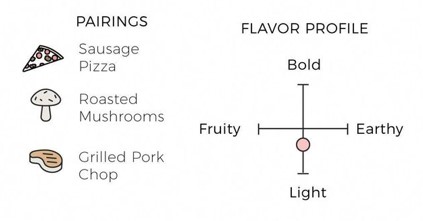
Food & Wine Pairings
Hmmmmm, where to begin? Let’s take advantage of Barbera’s acidity and range of styles to demonstrate its versatility. The bright crispness of a Barbera d’Asti can be enjoyed with a rich and rustic Bruschetta Gallinnaci (Chanterelle mushroom bruschetta) to get things started. And if the lunch bell is ringing quaff a glass with a salami and Bel Paese panini. Its elegance and finesse make it equally at home with a chicken-liver risotto for dinner. A Barbera d’Alba is a compelling companion to almost anything with feathers or fur. How about a robust Gemelli Bolognese or Cassoulet au Canard (duck and white bean stew)? Live it up like a Greek and pair the wine with Lamb Moussaka. Opah! For the die-hard romantics, picture this sensuous Scandinavian apré-ski option: A fireplace, bearskin rug, partner of choice, bottle of Barbera and Gruyere fondue with cubes of crusty bread and sliced red apples. Oh yeah, baby! A Francophile might enjoy a roasted duck confit, Canard Rôti, with a lush Barbera d’Alba. Of course, it almost goes without saying that this grape is an old friend to a thick Veal Chop studded with slivered garlic or Osso Buco (bone mmmmarrow!). No, it doesn’t get much better than that!
Styles
Barbera truly reflects the soil in which it is grown. Every town and its surrounding area (think Asti and Alba) possess unique soil and climatic traits even though they may be only a few miles apart. All Barbera wines are not created equal. Location aside, individual producers reflect their partisan nature, traditional or modern, in their wines. This variety is part of the charm of one of Italy’s best values for a wine experience. Barbera wines are eminently affordable yet distinctly individualistic. That certainly can’t be said for every wine from Piemonte, let alone Italy as a whole. Remember that country, region, producer & production dictate price.


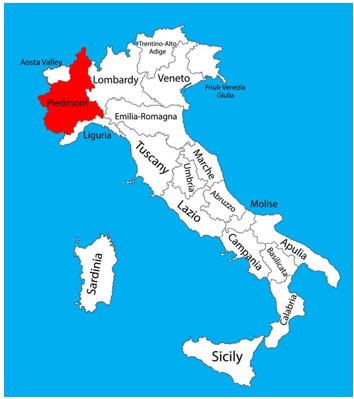

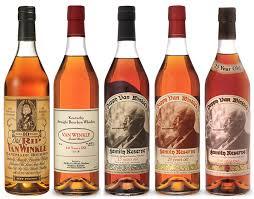




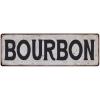


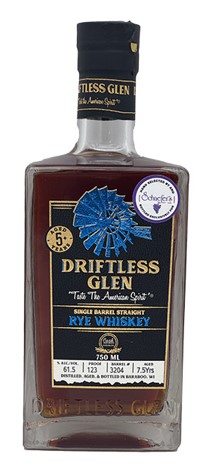

Comments